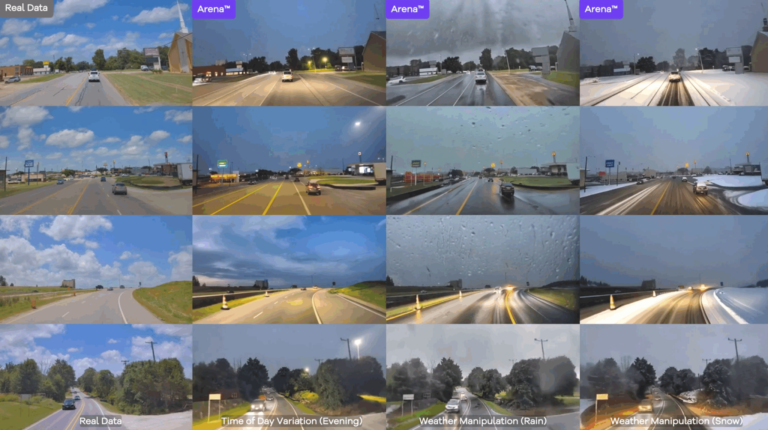Gatik has launched Arena, its next-generation simulation platform designed to accelerate the development and validation of autonomous vehicle systems. The platform has been developed in collaboration with Nvidia and integrates Nvidia Cosmos World Foundation Models (WFMs).
As Gatik scales freight-only driverless operations in 2025, Arena is designed to enable safe and efficient training for its autonomous systems on a wide range of driving scenarios, reducing reliance on on-road testing.
Arena uses high-fidelity synthetic data generation, combining real-world logs, trajectory editing, agent modeling and multi-sensor simulation pipelines, to deliver full closed-loop simulations.
“As the AV industry pushes toward scaled deployments, the bottleneck isn’t just better algorithms – it’s better, smarter data,” said Gautam Narang, Gatik’s CEO and co-founder. “Arena allows us to simulate the edge cases, rare events and high-risk scenarios that matter most, with photorealism and fidelity that match the complexities of the real world.”
“Nvidia Cosmos has been purpose-built to accelerate world model training and accelerate physical AI development for autonomous vehicles,” said Norm Marks, vice president of global automotive, Nvidia. “Our collaboration with Gatik unlocks the development of safe, reliable, ultra-high-fidelity digital environments for robust AV training and validation, and is helping to accelerate the commercialization of Gatik’s autonomous trucking solution at scale.”
Simulation-first development
Arena is designed to address challenges in scale, diversity and reproducibility of testing by using a modular simulation engine that incorporates advanced AI techniques, such as NeRFs, 3D Gaussian splatting and diffusion models, to enable scaling from quick scenario augmentation to high-fidelity, full-stack simulation.
The system combines photorealistic neural rendering, scenario editing and sensor-accurate outputs to create high-fidelity, real-world simulations for autonomous vehicle testing.
It also supports closed-loop interactions between ego-vehicle decisions and surrounding agents (NPCs), modeling dynamics and policy behavior in complex environments, and enables scalable, annotation-free data generation for machine learning workflows, regression testing and safety case validation.
Purpose-built for autonomous driving
The simulation platform has been engineered with AV-specific needs in mind, including support for difficult-to-collect or safety-critical scenarios such as adverse weather and visibility, unpredictable road users, challenging road geometry, dynamic road changes, sensor and perception failures, and dense urban interactions.
“With Arena, we’re reimagining simulation not just as a testing tool, but as a core enabler of safe, scalable autonomy,” said Narang. “It gives us the control, realism and flexibility we need to rapidly build confidence in our systems – and do so without compromising safety or time-to-market.”
In related news, Waabi has launched an alternative to closed-course track testing – mixed reality testing (MRT). Read the full story here


